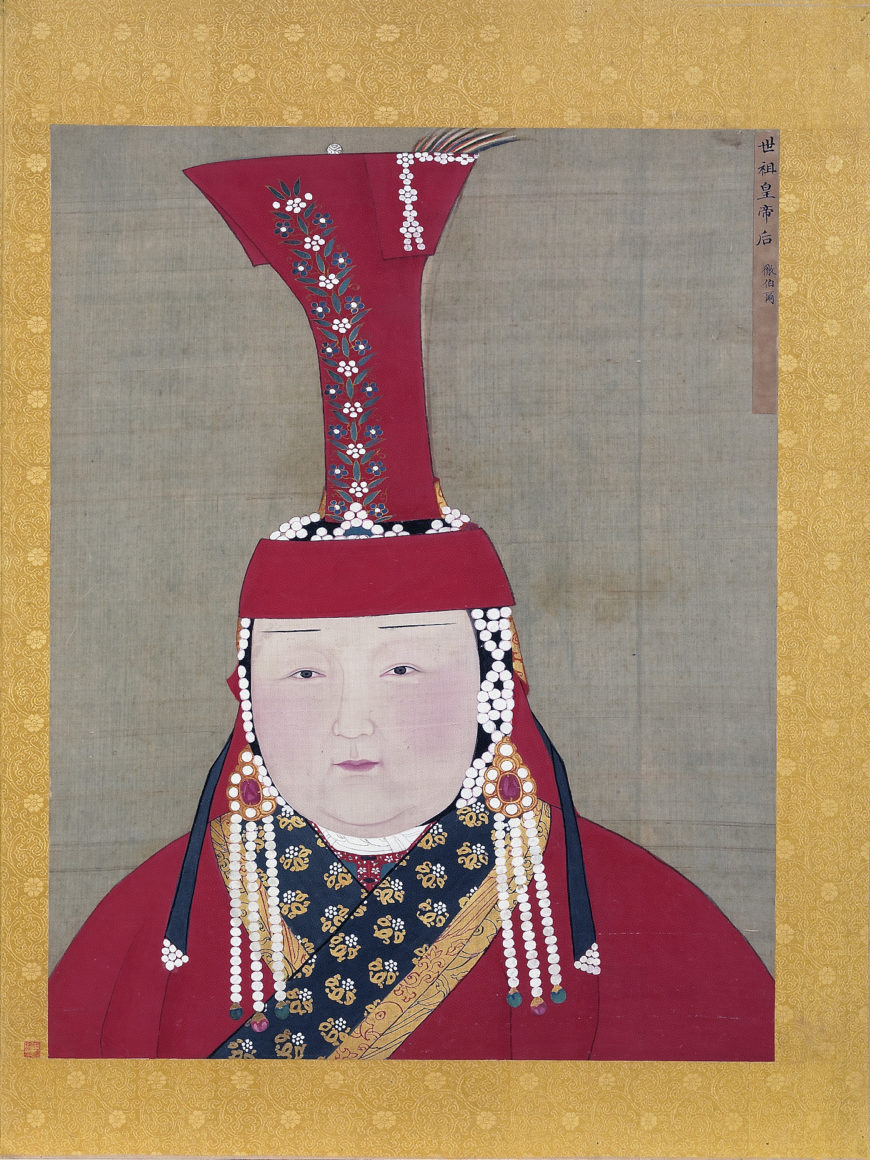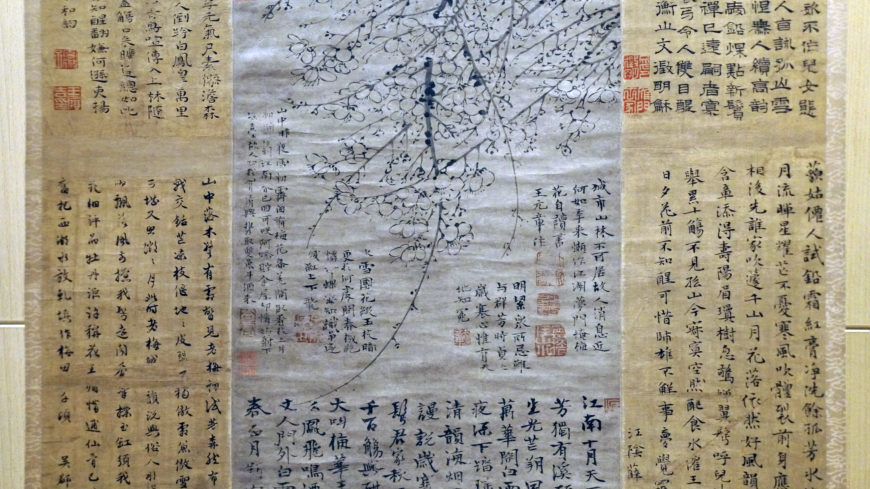This enormous Buddhist wall painting exemplifies an important format of Chinese painting.
Buddha of Medicine Bhaishajyaguru (Yaoshi fo), c. 1319 (Yuan dynasty), water-based pigments on clay mixed with straw, 751.8 x 1511.3 cm (The Metropolitan Museum of Art, New York)




